Faculty Position Opening 1
Faculty Position Opening
University of São Paulo / Institute of Physics
Department of Materials Physics and Mechanics
Rank: Assistant Professor (Permanent Position)
Faculty Position Opening
University of São Paulo / Institute of Physics
Department of Materials Physics and Mechanics
Rank: Assistant Professor (Permanent Position)
|
|
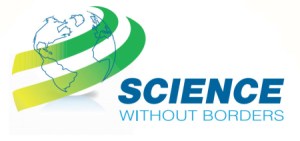 In the program for "Special Visiting Researcher", aimed to attract foreign researchers recognized internationally as leadership, DFMT will receive Profs. Jason S. Gardner (Indiana University) and Paul Koenraad (Eindhoven University of Technology).
In the program for "Special Visiting Researcher", aimed to attract foreign researchers recognized internationally as leadership, DFMT will receive Profs. Jason S. Gardner (Indiana University) and Paul Koenraad (Eindhoven University of Technology).
Project 1. Geometrically Frustrated Pyrochlore Magnets
|
xxxxxxxxxxxxxxxxxxxxxxxxxx Leia mais |
Artigo da Professora Maria Cristina dos Santos é escolhido como capa da revista Advanced Materials. |
Bose-Einstein condensation occurs when a system of quantum-mechanical particles with integer spin or angular momentum is cooled to its ground state and forms a coherent state of identical particles. The Bose-Einstein condensate (BEC) occurs in systems that satisfy two requirements: bosonic behavior and number conservation. It is this second requirement that limits the prevalence of BEC systems in nature. BECs were first identified in dilute collections of laser-cooled cold atoms in 1995, leading to the Nobel Prize.
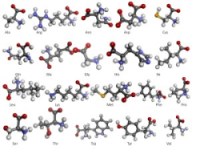 DFMT I.C. student Henrique Jose Correia Zanoli received an Honorable Mention Award in the 20º International Scientific Initiation Symposium of USP. The awarded study “Structural and electronic analysis of amino acids by semi-empirical quantum computational methods” was supervised by Profa. Helena M. Petrilli in the NANOMOL group and supported by FAPESP I.C. scholarship.
DFMT I.C. student Henrique Jose Correia Zanoli received an Honorable Mention Award in the 20º International Scientific Initiation Symposium of USP. The awarded study “Structural and electronic analysis of amino acids by semi-empirical quantum computational methods” was supervised by Profa. Helena M. Petrilli in the NANOMOL group and supported by FAPESP I.C. scholarship.
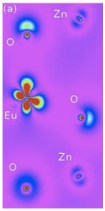 Prof. Lucy Assali investigate the eletronic properties of lanthanide impurities (from Eu to Tm) in wurtzite gallium nitride and zinc oxide in a collaboration paper between the Institute of Physics and the Polytechnic School of the University of São Paulo. The first principles calculations results indicated that the 4f-related energy levels remain outside the bandgap in both materials.
Prof. Lucy Assali investigate the eletronic properties of lanthanide impurities (from Eu to Tm) in wurtzite gallium nitride and zinc oxide in a collaboration paper between the Institute of Physics and the Polytechnic School of the University of São Paulo. The first principles calculations results indicated that the 4f-related energy levels remain outside the bandgap in both materials.
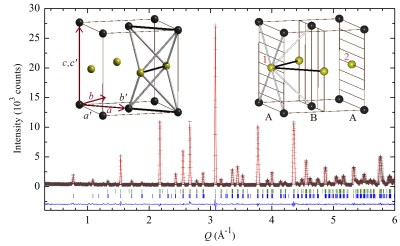 A neutron diffraction study by Prof. Renato F. Jardim in collaboration with UNICAMP, NIST and the San Diego State University determined the magnetic properties of the Sr2YRuO6 system. The data revealed planar magnetic correlations that condense into a partial long-range ordered state with coupled alternate antiferromagnetic YRuO4 square layers coexisting with the short-range correlations.
A neutron diffraction study by Prof. Renato F. Jardim in collaboration with UNICAMP, NIST and the San Diego State University determined the magnetic properties of the Sr2YRuO6 system. The data revealed planar magnetic correlations that condense into a partial long-range ordered state with coupled alternate antiferromagnetic YRuO4 square layers coexisting with the short-range correlations.
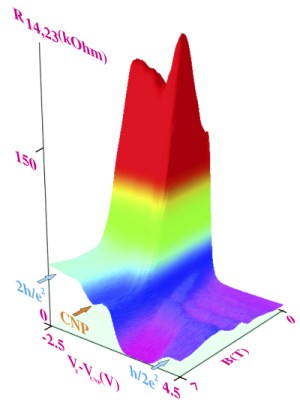 In collaboration with the Institute of Semiconductor Physics from Russia, Prof. Gennady Gusev studied the quantized transport in HgTe wells with inverted band structure corresponding to the two-dimensional topological insulator phase (2D TI) with locally controlled density allowing n-p-n and n-2D TI-n junctions.
In collaboration with the Institute of Semiconductor Physics from Russia, Prof. Gennady Gusev studied the quantized transport in HgTe wells with inverted band structure corresponding to the two-dimensional topological insulator phase (2D TI) with locally controlled density allowing n-p-n and n-2D TI-n junctions.
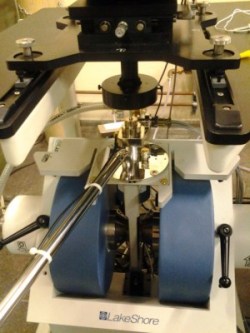 In the last weeks of January, a vibrating sample magnetometer - VSM was installed in the Laboratory of Magnetic Materials. This equipment, model 7404 from LakesShore is used to characterize the DC magnetic properties of materials as a function of magnetic field, temperature, and time.
In the last weeks of January, a vibrating sample magnetometer - VSM was installed in the Laboratory of Magnetic Materials. This equipment, model 7404 from LakesShore is used to characterize the DC magnetic properties of materials as a function of magnetic field, temperature, and time.